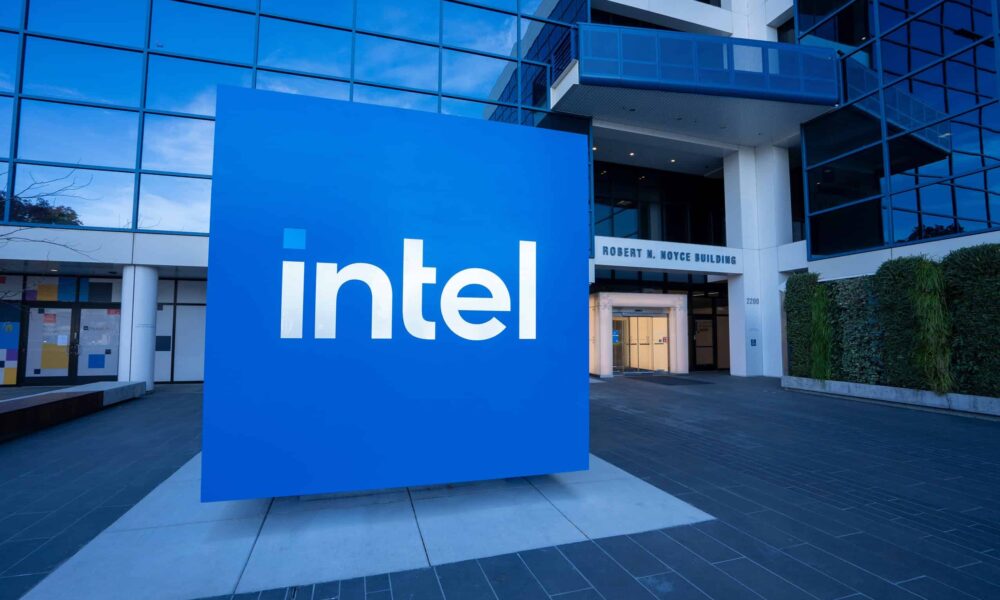Cardano Surpasses 100.000 Contracts – In 2024, the Cardano blockchain (ADA) reached a significant and highly anticipated milestone: it surpassed 100.000 smart contracts deployed on its network. This achievement is a clear testament to Cardano’s steady and continuous growth, showcasing not only its increasing influence in the cryptocurrency space but also its ongoing commitment to innovation. Surpassing 100.000 smart contracts marks a pivotal moment in the journey of Cardano, reinforcing the rapid progress the platform has made in a relatively short time.
This momentous accomplishment underscores the robust infrastructure of the Cardano blockchain, which has long been lauded for its research-driven development and focus on scalability. The growth of smart contracts on Cardano signals a major leap in the ecosystem’s ability to support decentralized applications (dApps), decentralized finance (DeFi) projects, and non-fungible tokens (NFTs). As Cardano surpasses 100.000 smart contracts, it positions itself as a key player in the blockchain ecosystem, poised for even greater advancements in the years to come.
The Cardano Journey to Surpassing 100.000 Smart Contracts
Cardano’s rapid rise is no accident. The platform’s success is deeply rooted in its innovative approach to blockchain technology, which combines academic rigor with community-driven development. In particular, the advancement of Plutus V2 and V3—the blockchain’s smart contract languages—has played an instrumental role in the explosive growth of smart contracts.
By the start of 2024, there were already 8,083 Plutus V2 scripts in operation. However, by December 27th of the same year, this number had increased to 104,606. This dramatic surge of nearly 96,523 contracts within a year is a direct reflection of the powerful capabilities of Plutus V2 and the increased demand for Cardano’s smart contract infrastructure. But what exactly is driving this growth, and why does it matter?
Factors Behind Cardano’s Success and the Implications for the Blockchain Ecosystem
Several key advancements have been pivotal in driving Cardano’s success and enabling it to surpass the monumental 100.000 smart contract milestone. Among these developments, the enhanced features of Plutus V2 and the introduction of Plutus V3 stand out. These advancements have profound implications not only for DeFi and NFTs but for the blockchain ecosystem at large. To fully understand the significance of Cardano surpassing 100.000 smart contracts, we must delve into the technological breakthroughs that have enabled such rapid growth.
Cardano Surpasses 100.000 Contracts: The Rise of Plutus V2
Plutus V2, the latest iteration of Cardano’s smart contract infrastructure, has proven to be a transformative force in the blockchain space. As of January 2024, Plutus V2 had 8,083 scripts running on the network. By the end of the year, that number had grown exponentially, reaching 104,606 active smart contracts. This growth represents a staggering increase of 96,523 contracts, highlighting the enormous potential of Plutus V2 as a powerful tool for developers building decentralized applications (dApps) on the Cardano network.
Plutus V2 introduced a host of improvements designed to enhance the flexibility, efficiency, and scalability of Cardano’s smart contracts. Developers now have access to advanced features, more powerful programming tools, and reduced transaction costs, which have made the platform an attractive choice for blockchain innovators. Additionally, these upgrades have positioned Cardano as a blockchain platform capable of handling a wide range of use cases, from financial applications to gaming and NFTs.
Plutus V1: Still Relevant in Cardano’s Evolving Ecosystem
While Plutus V2 took center stage in 2024, it’s important to recognize that Plutus V1 scripts also played a role in the expansion of Cardano’s smart contract network. Although the growth of Plutus V1 contracts was slower compared to Plutus V2, there was still an increase in the number of active Plutus V1 contracts. The number of Plutus V1 scripts grew from 6,296 at the beginning of the year to 6,869 by December 2024, marking a modest increase of 573 contracts.
The coexistence of Plutus V1 and V2 within the Cardano ecosystem illustrates the platform’s versatility and adaptability. It allows developers to choose the best tools for their projects, whether they are building new applications or maintaining legacy systems. This flexibility enhances Cardano’s appeal as a blockchain platform that can support both emerging and established projects.
Plutus V3: Ushering in a New Era of Smart Contract Innovation
Perhaps the most exciting development in Cardano’s journey to surpass 100.000 smart contracts is the introduction of Plutus V3. Launched in August 2024 following the highly anticipated Chang Hard Fork, Plutus V3 has brought significant improvements in efficiency, interoperability, and security. This upgrade has already started to make a notable impact, with 438 active contracts using Plutus V3 by December 2024.
The key advantage of Plutus V3 is its ability to lower development costs while making Cardano an even more attractive platform for decentralized finance (DeFi), decentralized applications (dApps), and non-fungible tokens (NFTs). With its improved features, Plutus V3 is expected to accelerate the adoption of smart contracts on Cardano, pushing the network toward even greater heights. As more developers adopt Plutus V3, the number of smart contracts deployed on the platform will only continue to grow, reinforcing Cardano’s position as a leader in the blockchain space.
Cardano’s Market Impact and the ADA Price Surge
As Cardano surpassed 100.000 smart contracts, the impact on its native cryptocurrency, ADA, was significant. By the end of 2024, the price of ADA had risen to $0.9074, marking a remarkable 52.79% increase over the year. This growth in ADA’s price reflects the rising demand for the Cardano network as more developers and businesses leverage its smart contract capabilities.
The increase in the number of deployed smart contracts also attracted institutional interest, further driving the price of ADA. As Cardano’s smart contract infrastructure expands and becomes more widely adopted, ADA could see additional price appreciation, further solidifying its position among the top cryptocurrencies.
Implications for Decentralized Applications (dApps)
Cardano’s growth in smart contract deployment has profound implications for the broader decentralized applications (dApps) ecosystem. As the platform’s capabilities continue to evolve with Plutus V2 and V3, Cardano has become an increasingly attractive option for developers building complex and innovative dApps.
Decentralized Finance (DeFi):
One of the most significant sectors to benefit from the advancements in Cardano’s smart contract infrastructure is decentralized finance (DeFi). With the new features introduced by Plutus V2 and V3, developers can now build more sophisticated DeFi applications. These include lending and borrowing platforms, decentralized exchanges (DEXs), yield farming protocols, and even algorithmic stablecoins. Cardano’s strong security model, low transaction fees, and eUTxO architecture make it an ideal blockchain for DeFi applications seeking scalability and efficiency.
Non-Fungible Tokens (NFTs):
Another sector that stands to benefit from Cardano’s rapid smart contract growth is the NFT market. Cardano has become a hub for NFT projects, attracting digital artists and collectors who appreciate the blockchain’s low transaction fees and environmentally friendly infrastructure. Platforms such as JPG Store and Artano have seen significant success, and as more NFT projects are launched on the Cardano network, the ecosystem is expected to continue expanding in 2025 and beyond.
Cardano Surpasses 100.000 Contracts – Cross-Chain Interoperability and Future Prospects for Cardano
Cardano has made significant strides in improving interoperability with other blockchains, especially with the introduction of Plutus V3. This enhancement allows Cardano to seamlessly integrate with various networks, enabling the flow of cross-chain liquidity and data. This interoperability is critical in strengthening the decentralized finance (DeFi) ecosystem, providing users access to a more extensive range of financial services and solutions. Cross-chain bridges, such as Milkomeda, have played a pivotal role in enabling Cardano to collaborate with Ethereum-based projects, significantly boosting its appeal to both developers and end-users.
As Cardano surpasses 100,000 smart contracts deployed, this milestone is not just a reflection of its technological evolution; it also underscores the blockchain’s growing influence. Cardano is increasingly seen as more than a platform for decentralized applications (dApps); it is emerging as a dynamic hub for innovation within the broader cryptocurrency ecosystem. This rapid growth in smart contracts positions Cardano as a competitor to other blockchain networks, helping to drive adoption across various sectors, including finance, gaming, and supply chain management.
Looking Ahead: What’s Next for Cardano in 2025 and Beyond?
After surpassing 100,000 smart contracts, Cardano has firmly established itself as a leading blockchain platform, poised for further expansion in 2025 and the years to come. Several key developments on the horizon will continue to strengthen Cardano’s position and broaden its influence in the blockchain space:
Plutus V3 Adoption Acceleration: As more developers embrace Plutus V3, the network will experience an even greater surge in smart contract deployment, particularly in the rapidly growing DeFi and NFT sectors. This will open up new avenues for innovation and collaboration, enhancing Cardano’s reputation as a developer-friendly platform.
Hydra Layer 2 Scaling: Cardano’s upcoming Hydra upgrade is set to revolutionize transaction speeds and drastically lower transaction costs, positioning the blockchain as a highly competitive choice for large-scale applications. Hydra’s scaling solutions will not only make Cardano more efficient but will also enable it to handle an ever-increasing number of users and transactions, further attracting high-demand projects.
Greater Institutional Adoption: As regulatory frameworks for blockchain technologies continue to evolve, Cardano’s robust and compliant architecture makes it an appealing choice for institutional players. This adoption is likely to increase significantly as governments and regulatory bodies refine their approach to cryptocurrency, providing Cardano with more opportunities for integration in traditional finance sectors.
Cross-Chain Integration Expansion: As interoperability continues to improve, Cardano will solidify its position as a central player in the interconnected crypto ecosystem. By supporting a growing number of cross-chain collaborations, Cardano is poised to enhance its reach and attract a broader range of users and developers, further cementing its role in the global blockchain landscape.
With these advancements, Cardano surpasses the expectations set for its development, becoming not just a leader in the blockchain space but also a catalyst for the next wave of innovation in the cryptocurrency industry. Looking forward, Cardano’s ongoing commitment to scalability, security, and cross-chain connectivity will likely drive its continued success and adoption, positioning it as a critical player in the blockchain revolution for years to come.
Conclusion: Cardano Surpasses 100.000 Smart Contracts – A Pivotal Milestone for a Promising Future
Cardano surpasses the significant milestone of 100,000 smart contracts, a clear indicator of its growing influence, innovation, and robust future prospects. This achievement showcases the platform’s remarkable evolution, driven by a dedication to research-backed development and a strong focus on scalability and security. These core principles have made Cardano an attractive choice for both developers seeking advanced solutions and investors eager to be part of its dynamic ecosystem.
Cardano’s commitment to empowering decentralized applications (dApps) through its unique smart contract capabilities sets it apart from other blockchain networks. The platform’s progress is further propelled by the introduction of Plutus V2 and V3, two groundbreaking versions of its smart contract language, which enhance functionality, efficiency, and ease of use. These upgrades not only improve the performance of existing dApps but also open new possibilities in fields such as decentralized finance (DeFi), digital identity management, and supply chain solutions.
As the blockchain landscape rapidly evolves, Cardano surpasses expectations with its sustained focus on cutting-edge technology, positioning itself as a pivotal player in shaping the future of blockchain adoption. With a detailed and ambitious roadmap, including the ongoing expansion of its ecosystem and the development of interoperability solutions, Cardano is poised to become a central hub in the global blockchain network. The impact of these advancements extends well beyond DeFi, influencing areas like education, healthcare, and governance, where decentralized solutions are becoming increasingly vital.
As Cardano surpasses 100,000 smart contracts, its journey into the next stages of blockchain development unfolds with increasing momentum. With these strategic innovations and its ever-growing community of developers and users, Cardano’s future shines brighter than ever.



